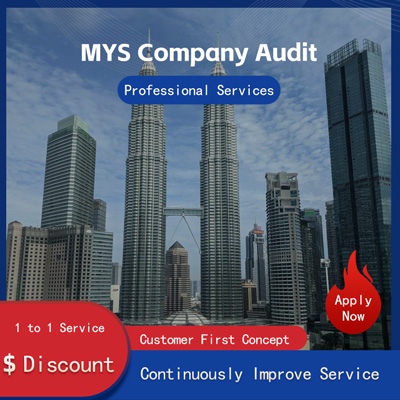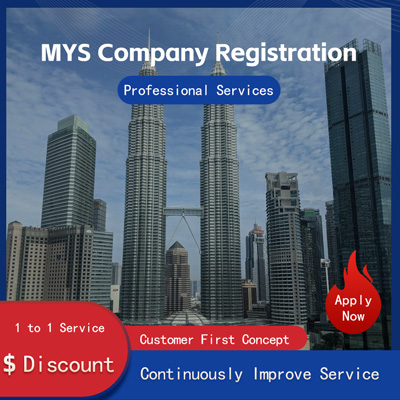
Hong Kong Branch Registration Cancellation Guide Every Step from Preparation to Completion
Hong Kong Branch Cancellation Guide Every Step from Preparation to Completion
In recent years, many multinational corporations and local businesses have found themselves in situations where they need to dissolve their Hong Kong branches. This process can be complex and requires careful planning and execution. Whether it is due to strategic changes, financial challenges, or regulatory compliance issues, the decision to close a branch is never easy. However, with the right guidance and understanding of the legal framework, companies can navigate this process smoothly. In this article, we will explore every step involved in canceling a Hong Kong branch, from preparation to completion.

The first step in closing a Hong Kong branch is to ensure that all internal processes are completed. This includes obtaining approval from the company’s board of directors and shareholders. According to recent reports, companies often find that securing these approvals early in the process helps avoid delays later on. It is crucial for the management team to document the decision-making process and any resolutions passed during meetings. This documentation serves as proof of the legitimacy of the closure process and can be essential if any disputes arise.
Once internal approvals are secured, the next step is to notify relevant stakeholders. This includes employees, customers, suppliers, and partners. Communication should be clear and transparent, outlining the reasons for the closure and any implications for these parties. Recent news has highlighted the importance of proactive communication in managing stakeholder expectations. For instance, a well-planned communication strategy can help mitigate potential backlash and maintain goodwill among key stakeholders.
After notifying stakeholders, the company must engage with external authorities. The first authority to contact is the Inland Revenue Department IRD. As per IRD guidelines, companies must file a tax return for the period up to the date of cessation and ensure all outstanding tax liabilities are settled. A recent case study showed that failure to settle tax obligations promptly can lead to penalties and interest charges. Therefore, it is advisable to consult with a tax advisor to ensure all tax matters are resolved before proceeding further.
The second external authority to involve is the Companies Registry. Companies are required to submit an application for deregistration within one month after ceasing operations. The application must include a declaration stating that the company has ceased to carry on business, trade, or profession in Hong Kong. Additionally, the company must confirm that it has no outstanding debts or liabilities. The Companies Registry also requires proof that the IRD has been notified and that all tax obligations have been met. This step is critical as incomplete applications can result in delays and additional administrative work.
Another important aspect of the deregistration process is the winding-up of the branch's affairs. This involves settling all outstanding debts, paying off creditors, and distributing remaining assets. Companies should appoint a liquidator to oversee this process, ensuring that all legal requirements are met. Recent updates suggest that engaging a professional liquidator can significantly reduce the risk of errors and omissions, which could lead to legal complications.
In addition to these steps, companies must also consider the practical aspects of shutting down a branch. This includes terminating leases, returning equipment, and vacating premises. It is recommended that companies create a detailed checklist to ensure nothing is overlooked. Recent reports have shown that meticulous planning at this stage can prevent costly mistakes and ensure a smooth transition.
Throughout the entire process, maintaining accurate records is vital. Companies should keep copies of all correspondence with authorities, stakeholders, and service providers. These records can be invaluable in the event of audits or disputes. Furthermore, companies should consider archiving digital files and ensuring that electronic data is securely stored.
Finally, once all necessary steps have been completed, companies should confirm the official deregistration status with the Companies Registry. This confirmation marks the completion of the branch cancellation process. Companies should also update their internal records and inform any remaining stakeholders of the final status.
In conclusion, canceling a Hong Kong branch is a multifaceted process that requires attention to detail and compliance with various regulations. By following the outlined steps-securing internal approvals, communicating with stakeholders, engaging with authorities, winding up affairs, and maintaining records-companies can ensure a successful closure. While the process may seem daunting, seeking professional advice and staying organized can make it manageable. As always, staying informed about the latest regulations and best practices is key to navigating this challenging but necessary endeavor.
Helpful (0)
No help (0)
Still have questions after reading? More than 98,000 users have contacted us. Please fill in the following information to obtain business information.

Previous Article
Comprehensive Analysis of Hong Kong Company Deregistration Step-by-Step Guide to Complete Deregistration
Apr 12, 2025Next Article
Hong Kong Company Cancellation Process Explained Make It Easy to Handle Company Liquidation
Apr 12, 2025Service Scope
MoreRecommended for You
- Ningbo Firms Must Read Key Details for Smooth HK Company Deregistration
- How to Smoothly Deregister a Hong Kong Company? Reveal the Entire Process Tips for Agency Deregistration!
- A Guide to Expedited Deregistration of Hong Kong Companies by Anhui Enterprises!
- Shenzhen to HK Company Deregistration Are You Ready? Don't Wait Until Regret Forces Action!
- HK Company Voluntary Deregistration Process and Key Considerations Avoid Common Mistakes Easily!
- HK Company Deregistration Requirements A Complete Guide to Effortless Processing
- Serious Consequences of Compulsory Deregistration of HK Companies Do You Know?
- Hong Kong Sole Proprietorship Deregistration Guide Step-by-Step Process to Successfully Complete It
- Singapore Company Deregistration Key Points You Shouldn't Miss
- Can You Really Handle the Deregistration of a Singapore Pte Ltd on Your Own?
- Singapore Company Deregistration Guide Detailed Explanation of Procedures, Processes, and Key Considerations
- In-Depth Analysis of the Deregistration Process for Hong Kong-Interior Joint Ventures A Step-by-Step Guide to Completing the Final Step
- Hong Kong Company Deregistration Guide Essential Steps and Considerations
- How to Efficiently and Independently Deregister a Hong Kong Company A Comprehensive Analysis of the Deregistration Process and Key Considerations
- Key Proof Documents Required After Cancellation of HK Company
- The Truth Behind Hong Kong Business Deregistration Critical Decisions and Opportunities Before the Benchmark Date
- Analysis and Considerations for the Cancellation of a Hong Kong Company
- HK Company Cancellation What Are the Costs? You'll Know After Reading!
- Analysis of the Entire Process for Registration and Deregistration of Skincare Companies in Hong Kong
- How to Check Cancellation Information of a HK Company? Master These Details for Smooth Handling


 ONE
ONE








Customer Reviews
Small *** Table
December 12, 2024The experience was very good. I was still struggling to compare it with other companies. I went to the site a few days ago and wanted to implement it as soon as possible. I didn't expect that everything exceeded my expectations. The company is very large, with several hundred square meters. The employees are also dedicated and responsible. There is also a wall of certificates. I placed an order on the spot. It turned out that I did not make a wrong choice. The company's service attitude is very good and professional. The person who contacted me explained various things in detail in advance. After placing the order, the follow-up was also very timely, and they took the initiative to report the progress to me. In short, I am very satisfied and recommend this company!
Lin *** e
December 18, 2024When I first consulted customer service, they recommended an agent to me. They were very professional and patient and provided excellent service. They answered my questions as they came in. This 2-to-1 service model is very thoughtful. I had a lot of questions that I didn’t understand, and it’s not easy to register a company in Hong Kong. Fortunately, I have you.
t *** 7
December 19, 2024I originally thought that they only did mainland business, but I didn’t expect that they had been doing Hong Kong business and were doing very well. After the on-site interview, I decided to ask them to arrange the registration of my Hong Kong company. They helped me complete it very quickly and provided all the necessary information. The efficiency was awesome. It turns out that professional things should be done by professionals.👍
b *** 5
December 16, 2024In order to register a company in Hong Kong, I compared many platforms and stores and finally chose this store. The merchant said that they have been operating offline for more than 10 years and are indeed an old team of corporate services. The efficiency is first-class, and the customer service is also very professional.